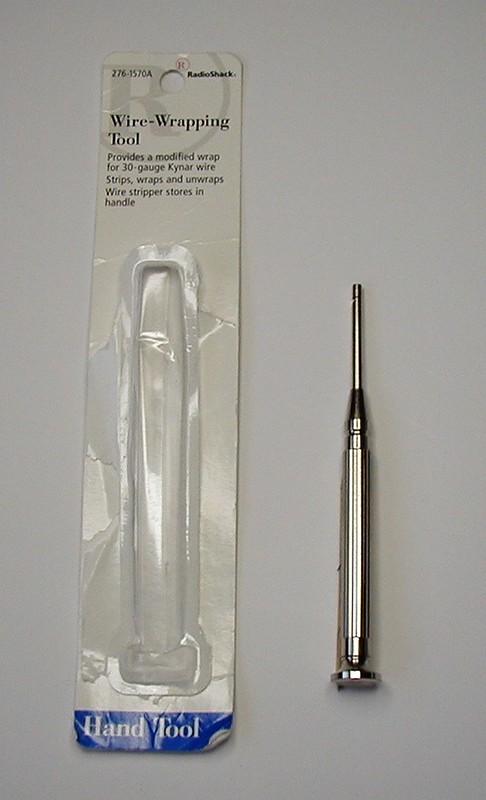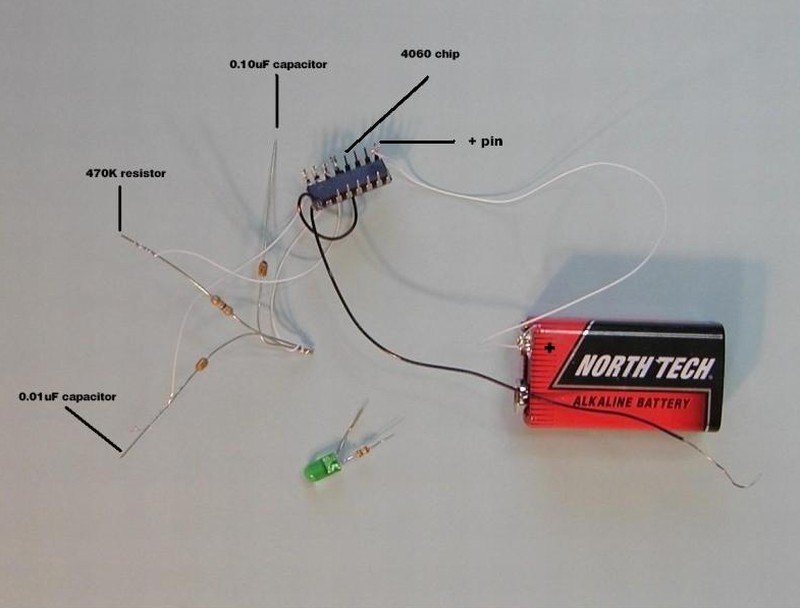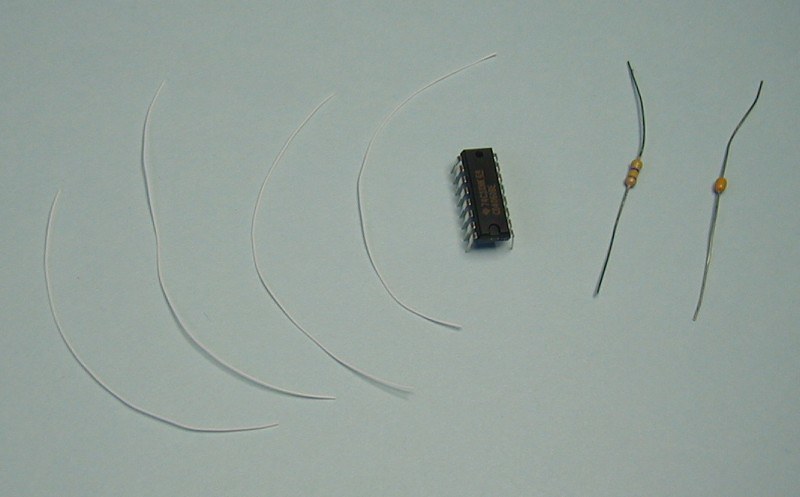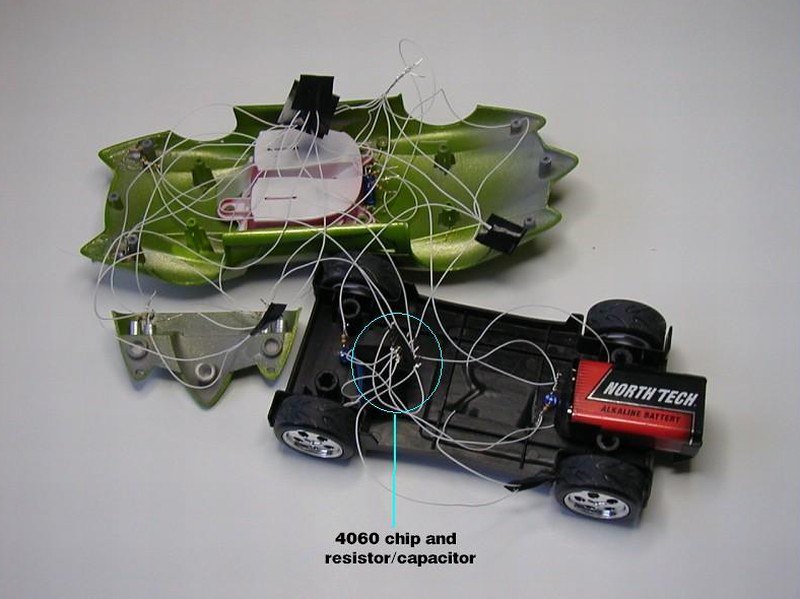|
|
Post by wisdonm on Feb 5, 2021 15:20:40 GMT -7
I would like to enter it in an upcoming show. However, I have several fears: 1. Will the 9 volt battery last the whole show? 2. Will the twin headlights generate enough heat to melt the headlight cover? I would also like to: 1. Display the Mach 5 with the lights on and lights off. 2. Maybe add a little sizzle to the light show. I though this kind of stuff was way out of my league, until I read an article by, and corresponded with Clyde Jones aka Zog. Clyde seems to know his way around electronics and electronic parts suppliers. Without his help, I probably would not have proceeded. I am in no way an expert on this stuff. I used Clyde's suggestions and did a little experimentation. These are my results. Use this info at your own risk. Clyde suggested I needed a computer chip. Specifically a CD 4060. In geek speak the IC, CD 4060 is a 14-stage binary counter with Q1, Q2 Q3 and Q11 missing. The maximum division is 16,384 with Q14 going HIGH after 8,192 cycles and then LOW after another 8,192 cycles. It has internal components to create an oscillator. The CD 4060 is a CMOS chip. Minimum supply voltage 6v. Maximum supply voltage 15v. Max current per output 15mA. Maximum speed of operation 5MHz. What does this mean to us model makers? If you are a modeler interested in making your creations come alive with blinking lights - marker lights, head or tail lights, strobes - this is a little chip that will do a lot of LED blinking for a very little money, power, or complexity. The 4060 runs happily on 6 to 15 volts, and drives LEDs safely with only 12-15 mA (milli-amps) of current. Most LEDs thrive on 15 to 20 mA, so they are a bit dimmer then they might be otherwise, but they will not die from too much power and resistors are not needed. Your LEDs should last almost forever. Since the 4060 chip is a CMOS type, unlike some other chips, it uses very little power internally to run itself. Another wonderful feature of the 4060 is they are cheap. $0.29 or less from some suppliers. Clyde recommended and I successfully used: Jameco Electronics 1355 Shoreway Road Belmont, CA 94002 Phone: 1-800-831-4242 their web address is exactly what you think it should be. The Jameco part number for this little beauty is #13151. They cost 29 cents for less than ten, 25 cents for 10-99 units. You will need two other components to make the 4060 work. A capacitor and a resistor. Both are quite inexpensive also. The capacitor Clyde recommended was a CER, 0.01UF, 100V, 10%, AXIAL X7R. I have no idea what this means. Luckily Clyde told me they are part number #546257 and cost 10 cents each for 10-99 units. The last part needed is a resistor - usually a 470,000 ohm or 470 Kilo-ohm resistor, 1/4W, 5%. I bought an assortment of 540 resistors for $12.95. Jameco # 103166. The capacitor and the resistor set the basic frequency and 4060 chip divides it down.
|
|
|
|
Post by wisdonm on Feb 5, 2021 15:36:26 GMT -7
The 4060 chip is about 3/4" long and 5/16" wide. The chip is 1/8" tall but it is 9/32" tall including the wiring pins.
The second pix is a schematic of the 4060 with the pins numbered. This is the view from the top. The pins are pointing down. The notch is on the left.
You will see the positive pin on the upper left. The negative pin is on the lower right. The forth pin from the left on the top row is the reset pin. It is also a negative pin.
All the numbered pins are both positive and negative pins. Each pin goes from "positive to negative" rather than from "on to off". If you connect a regular light bulb to these pins it will stay lit continuously because it doesn't matter which direction the current is flowing. However, if you connect a polarized LED between pins, the LED will light if and only if the pin connected to its positive lead is positive and the pin connected to its negative lead is in fact negative.
Take a look at the last pix. There is a green conventional bulb. It works with current from either direction. The blue LED will only work when positive current is coming from the left or pin 6. The red led is turned around so that it will only light when positive current is coming from the right or pin 4.
So as pins 4 and 6 alternate not from "on and off" but "positive and negative" all three bulbs will react differently.
If pin 6 is positive and the 4 pin is negative: the green bulb will be lit, the blue bulb will be lit, and the red bulb will be unlit.
When the current alternates, pin 6 becomes negative while pin 4 becomes positive. Now the green bulb is still lit, the blue bulb is unlit, and the red bulb is now lit.
So as the current at the pins alternate between positive and negative current, the omni directional conventional bulb is always lit, while the unidirectional LEDs blink on and off with the direction change of the current.
_________________
Stand on it...brakes only slow you down
|
|
|
|
Post by Grandpabeast on Feb 9, 2021 1:06:51 GMT -7
This is great stuff ! Thank you for posting!
|
|
|
|
Post by wisdonm on Feb 9, 2021 11:14:43 GMT -7
Thanks Dave. I'm surprised that your the only one that has looked. Let's continue. So you're all asking yourselves how fast will things blink? The geek answer is each numbered pin indicates the frequency divide by pin level. Pin 4 divides the basic frequency by binary 4 (2 to the 4th power or 16). Pin 14 divides the basic frequency by 2 to the 14th power equals "lots" in layman terms, it could be 16,384, but does it really matter? All us modelers need to know is the pin marked "4" is the fastest blinker - changes quicker, more often. The pin marked "14" changes slowest, least often. Each number pin changes half as fast as the smaller numbered pin below it in the sequence. Each numbered pin changes twice as fast as the larger numbered pin above it in the sequence. And by combining pins you get an awful lot of combinations. So what is the basic frequency? This is set by the timing capacitor used. I tried the recommended 0.01UF (micro-farrad) timing capacitor and a 0.10UF capacitor. As you might guess the second 0.10 capacitor blinks 10 times slower than the 0.01 capacitor. There is a very useful hand tool for working with these electronic components and wrapping wire. When I originally built the Mach 5 all the electrical connections were just bare wires twisted together by hand. I tried this with the 4060 chip. It can be done, but is hard to do. Using a wire wrapping tool is much simpler and makes the connections better looking and more reliable. I got my wire wrapping tool from Radio Shack. The first time I went there they said they didn't carry them. Then I saw them for sale on Evilbay and got the part number. I then called Radio Shack and they said they had two in stock. When I went to pick it up they couldn't find them. Luckily I knew what I was looking for this time and found them. They are part #276-1570. They cost $5.99, but can be bought on Evilebay for less than that delivered.
This style of wrapping tool contains a wire stripper inside the handle.
This pix shows the pretty tool wrapped wire on the right and the ugly hand wrapped wires on the left.
|
|
|
|
Post by wisdonm on Feb 13, 2021 20:27:30 GMT -7
So let's make this chip work. The first step is to wire one end of the clocking capacitor to the pin labeled "out 2". Then wire one end of the clocking resistor to the pin labeled "out 1". Now Take a piece of wire and connect it to the pin labeled "CK". Finally connect the free end of these three components together. This completes the basic frequency clock. Your 4060 will now work if connected to a power supply. 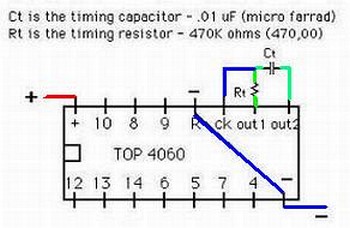
Take a (red) piece of wire and connect one end to the positive (+) pin. Take the other end of the wire and connect it to the positive terminal of your battery. I am using a 9 volt battery. Using the racers credo that nothing is lighter nor cheaper than nothing, I drill a hole in each battery terminal and just wrapped the wire to the terminal. Way cheaper than buying a battery connector and takes up a lot less space. Now take a piece of (black) wire and connect one end to the negative (--) pin and connect the other end to the negative side of the battery. You should also connect a wire from the negative (--) pin and the pin labeled "R" (reset). I don't know why. I was just told to do it.
Now the 4060 chip is wired and functioning. If you touch the leads of a LED to almost any combination of numbered pins something should happen.
I wired up a test rig just as described, except that I wired in both the 0.10uF and the recommended 0.01uF capacitors. By moving just one wire, I can switch between the two. So lets see what happens when we touch some pins.
|
|
|
|
Post by wisdonm on Feb 13, 2021 20:29:59 GMT -7
If I touch negative lead of a LED to the (--) negative pin and the positive lead (usually longer lead) to the (+) positive pin the Led lights and stays lit. If it doesn't light reverse the leads.
Now when I connect the LED with the negative pin and pin #4, the fastest pin, I get a very fast blink.
When I connected the LED between the negative pin and pin #14, the slowest pin, the LED blinks very slowly. About 45 seconds on and then 45 seconds off. I can use this to show the Mach 5 with the head and tail lights on and with the lights off.
Let's try something different. Connecting the LED leads between pins #5 and #7 should give you a heart beat blink. Flash flash, pause, flash flash, pause. Cool. I might hook up the high beams like this to simulate the international passing signal.
When you connect the LED to pins #4 and #7 it reminds me of a police car. Flash, flash, flash, flask, pause. Four very fast flashes then a pause.
When I connected the LED between pins #8 and #9 I got a slow blink that was on about 25% of the time and off the rest.
One more. When I connected pins #4 and #12, I got a very fast blink for 12 seconds and then a 12 second pause.
There are well over 100 combinations that you can use, all at the same time from one 25 cent chip . Pretty cool.
Oh. When I used the 0.10uF capacitor instead of the 0.01uF, everything slows way down.
Now I have to decide what I want to blink and to what rhythm.
|
|
|
|
Post by Grandpabeast on Feb 14, 2021 16:41:41 GMT -7
Can you give me a little help? I am wanting to build a police car with red and blue flashing lights on top.
Give me an idea or a list of all the things I will need
|
|
|
|
Post by wisdonm on Feb 15, 2021 21:01:37 GMT -7
Yes Dave, I can hook you up out of my stash. Just send me a PM with the number and color of lights that you need.
These chips with LED lights are perfect for alternating lights. Since the chips are not on/off but alternate +/- polarity. The LEDS are polarity controlled. So if you connect two lights in the same circuit, but with the polarities reversed, when on goes out the other goes on. If you used incandescent lights they would both stay on all the time, since polarity doesn't matter.
|
|
|
|
Post by Grandpabeast on Feb 17, 2021 15:45:45 GMT -7
Thanks, I’ll send you a message this weekend
|
|
|
|
Post by wisdonm on Feb 18, 2021 16:56:10 GMT -7
So here is the last installment. Let's put it all together. First I got out a chip, cut and stripped a few pieces of wire, a resistor, and a capacitor. I then wired up the chip just like I explained in the reply with the pix of the wire wrapping tool.
I shortened the leads on the capacitor and resistor. When its all done I took a small piece of electrical tape and folded it over the capacitor and resistor unit, so that they could not short out.
Next I had to start unwiring and clipping the old LEDs. All of the new wiring will be parallel circuits, except for the windshield lights. I wired the two windshield lights in series, in hopes that they would be dimmer. This is the new wiring diagram.
|
|
|
|
Post by Grandpabeast on Feb 18, 2021 17:53:08 GMT -7
Very cool
|
|
|
|
Post by Grandpabeast on Feb 18, 2021 17:54:33 GMT -7
Did you get my pm
|
|
|
|
Post by wisdonm on Feb 20, 2021 7:27:45 GMT -7
The chip and capacitor/resistor pack easily fit in front of the cockpit tub. All I have to do now is get all this back inside the Mach 5.
It worked just as I expected. The low beams, tail lights, and interior mood lights stay on for one minute. Then they turn off for one minute, then on again. The high beams go blink blink pause, move over coming through, all the time. The ground effect and windshield lights light for twelve seconds, then go out for twelve seconds, and then repeat.
I am still running twelve LEDs from a nine volt battery. Since the LEDs now blink they are actually off a lot of the time. This reduces heat, increases battery life, while making the show more interesting. I took it to a show last night and it winked and blinked for six straight hours with no signs of slowing down.
So there it is, all this for less than 75 cents in parts. You got to try this. If anyone needs info, help, or parts feel free to contact me.
|
|






